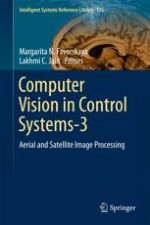2018 | OriginalPaper | Chapter
4. Methods of Filtering and Texture Segmentation of Multicomponent Images
Authors : E. Medvedeva, I. Trubin, E. Kurbatova
Published in: Computer Vision in Control Systems-3
Publisher: Springer International Publishing
Activate our intelligent search to find suitable subject content or patents.
Select sections of text to find matching patents with Artificial Intelligence. powered by
Select sections of text to find additional relevant content using AI-assisted search. powered by
